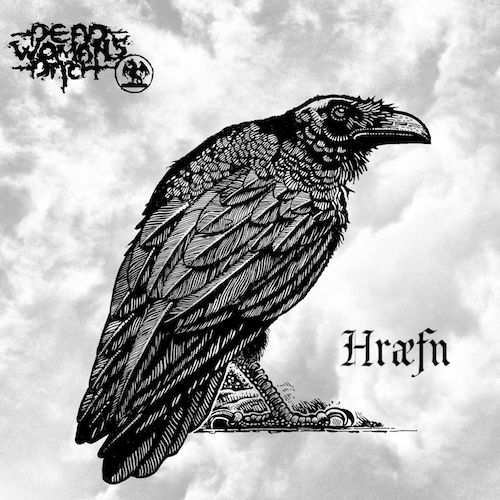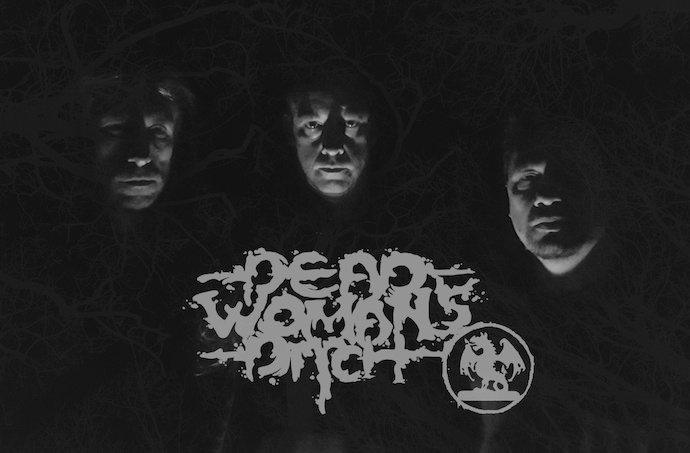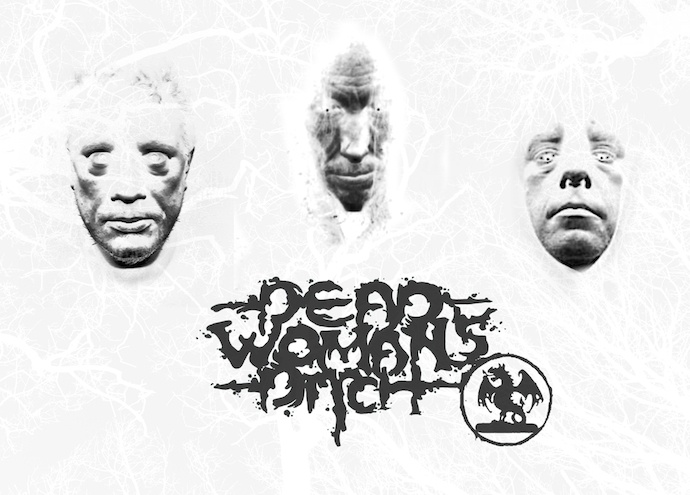
Time dims memories. Two-and-a-half years is not an eon, but long enough that I managed to lose track of where the name Dead Woman’s Ditch came from. It was that long ago that we premiered a song from this UK band’s debut album, Seo Mere Saetan, subsequently released in August 2017 by Third I Rex. When I re-read that earlier post, the explanation chilled my skin all over again. To repeat:

Dead Woman’s Ditch is the name given to the outer defense of an Iron Age earthworks in the Quantock Hills to the west of Bridgwater in Somerset, England. The band have explained that the place earned its name in this way:
In 1789 John Walford murdered his wife and dumped her body at Dead Woman’s Ditch.
His body was strung up a mile away, at a spot now named Walfords’ Gibbet…it was left to rot for a year and a day.
The ditch is an outer defense attached to Dowsborough Camp, an iron age hillfort. King Alfred’s Herepath or army road runs through the site.
The fort is also known as Danesbury in reference to a massacre of Viking invaders. It’s said the ghost of a Viking child executed shortly after the massacre can be heard from time to time.
Between Dead Woman’s Ditch and Walford’s Gibbet lies Shervage woods — once home to “The Gurt Wurm”, an ancient english dragon with a girth of two Oaks.
Shervage woods are also home to Wayland’s Pool, which is traditionally where the smith god cooled the horseshoes he made to shoe the horses of the Wild Hunt, Odin’s nocturnal ride across the skies to search for the souls of the damned.
I may have temporarily forgotten these bits of skin-chilling history, but not the music on Seo Mere Saetan, which I likened to “a blending of sludgy doom, black metal, and whatever implacable malice causes cancer to consume its host.” And in embarking on a journey through the band’s new album Hræfn, which will be released by the same Third I Rex on December 20th, and which you’ll now have a chance to hear in full, I began shuddering from those musical memories before even hearing the first note. I preemptively turned the heat up in my room; it made no difference.

The conglomeration of stylistic influences is still fundamentally the same as before — the new album’s music harnesses the cruel, flesh-razoring riffs and scalding shrieks of black metal and the oppressive heaviness of doom, but undergirds them with highly variable drum rhythms (which hit hard enough to rock you on your heels) and a maniacally vibrant (and heavy-pulsing) bass. But in addition, the rapidly morphing guitar lines have a crazed, hallucinatory quality, a feeling of derangement that at times seems glorious and at other times simply drugged-out and frightening.
The fieriness of the music frequently reaches a searing boil (the appearance of the lunatic guitar solos in “What Becomes Reality”, “Inside the Void”, and “Soulless Scum” are prime examples), but the band are just as liable to transition into a suffocating, doomed-out lurch and stagger (e.g., the finale of that first song just mentioned, or the intros to “Inside the Void” and “Broken Earth”) or to launch an attack that’s grim and sadistic (such as “Deny” and “Soulless Scum”, which are two of the songs in which gloomy wails and trippy singing combine with those vicious screams). But you’ll learn soon enough that DWD don’t stick to the same line for very long in any song — in that track “Deny”, for example, they also go nuts, and also drop into a narcotic meandering before flailing away again.
The effect of these intra-song changes, and the ways in which the band combine disparate elements, can be disorienting. “Alkukanta”, for example, intertwines jackhammering rhythms and feverish, skittering fretwork with slow, solemn, and ultimately creepy chant-like vocals (courtesy of Finnish guest Sovereign Korpituli). “Inside the Void” is so queasy in its sound that it will mess with your inner ear, but also treats you to episodes of battering mayhem.
Fortunately, the band don’t forsake the compulsive, head-busting rhythms, which are a hallmark of every song (except the last one). They give a headbanger something tasty to hang onto. But it must be said that the music continually betrays an affinity for psychedelia, or at least a propensity to introduce potent psychoactive elements, like someone has slipped acid into your cocktail of black metal and doom. And it’s not a rosy trip, but usually a scary one, in which the warped riffing, woozy leads, and freakish arpeggios spawn nightmarish visions — perhaps none more frightening than the blood-freezing sonic potion that is “Broken Earth”.
The closing track, “Dishonest Abomination”, which includes a performance by the band’s former bassist Chris Rust, was recorded as “a live noise jam session”. Let’s just say it will fuck you up. But in a way, ending the album with an acid trip that’s terrifying isn’t exactly a shock. In some ways it’s a logical conclusion to an album that seems constantly to be pushing at the outside of various envelopes, and finally just punches right through all of them.
******
Dead Woman’s Ditch consists of Glenn Charman (Bass, Guitar, Vocals), Robin Corbet (Drums), and George Rhone (Guitar, Vocals). They’ve shared this comment with us about Hræfn:
“The music on Hraefn is all stuff we’ve written since the release of Seo-Mere-Saetan, the band now back to the unholy trinity, the original three members. After all these years with several different members, we’ve come to realise that the Ditch only really shows its face properly in this configuration. The happily disjointed mixture of genres is still there but perhaps in a more exaggerated form.”
Hræfn was recorded D.I.Y. by Dead Woman’s Ditch at Herepath Studios (Somerset) over the winter of 2018/2019. Credit for the album art and sound engineering goes to Robin Corbet, and George Rhone mastered the album.
PRE-ORDER:
https://3rdirex.bandcamp.com/album/hr-fn
DEAD WOMAN’S DITCH:
https://www.facebook.com/deadwomansditch/
